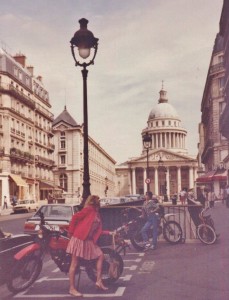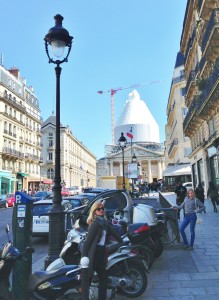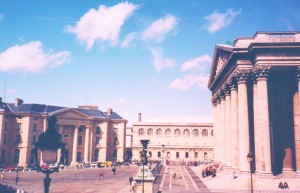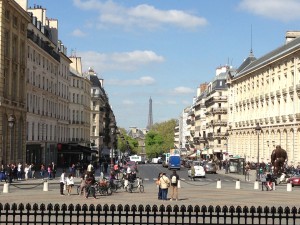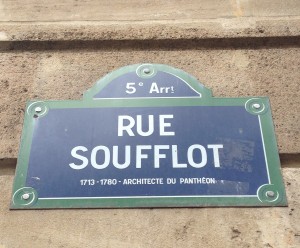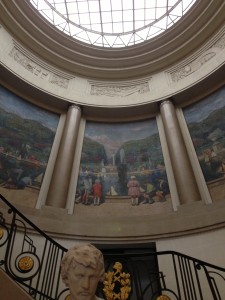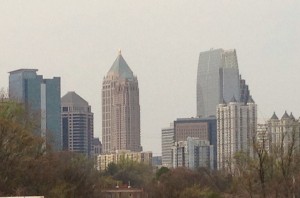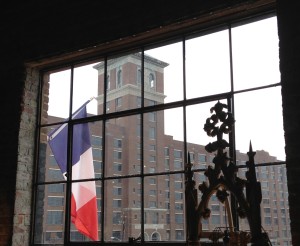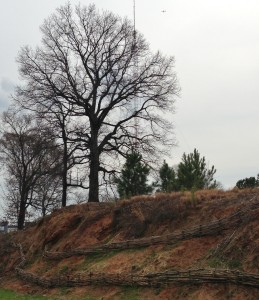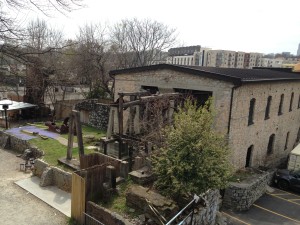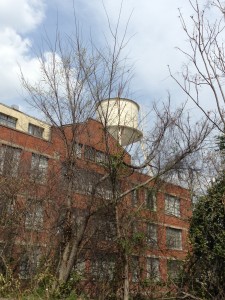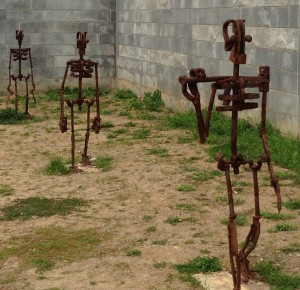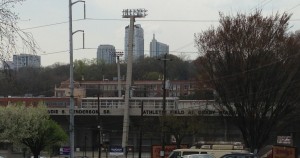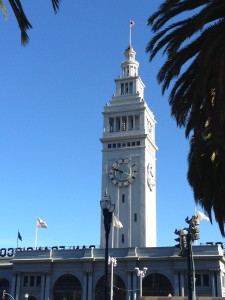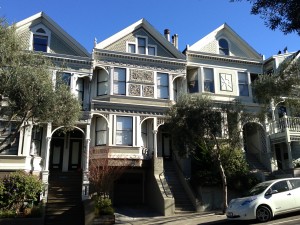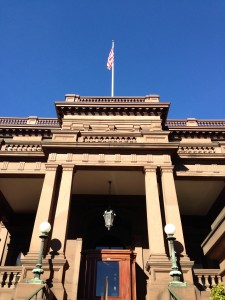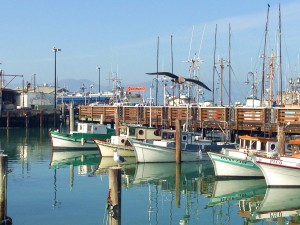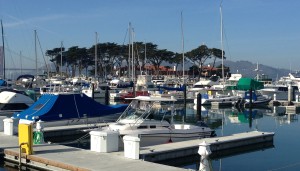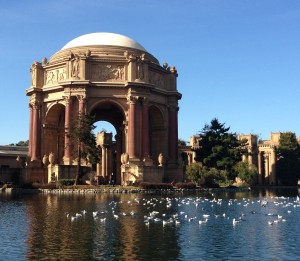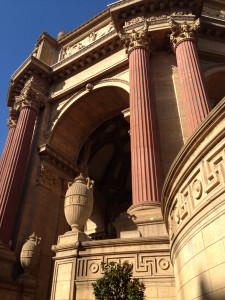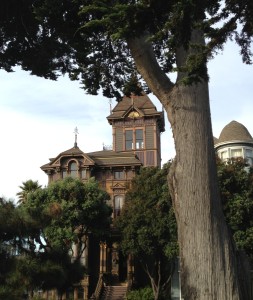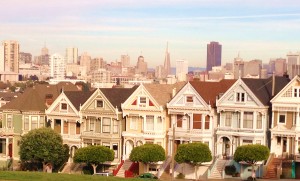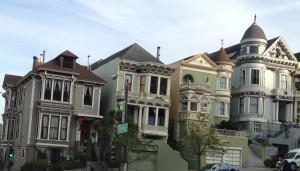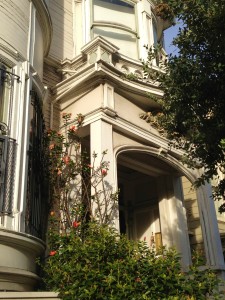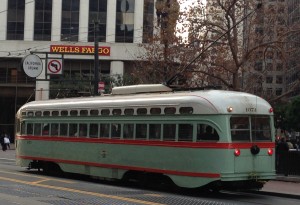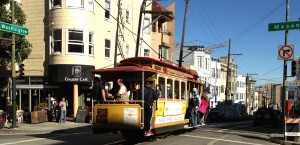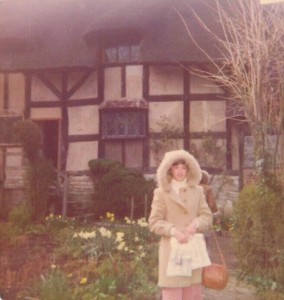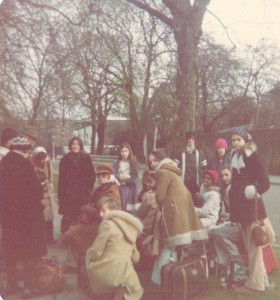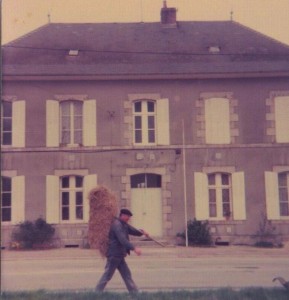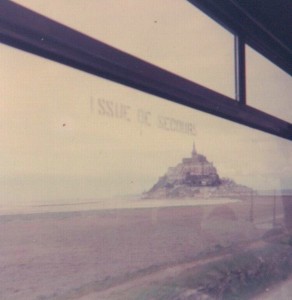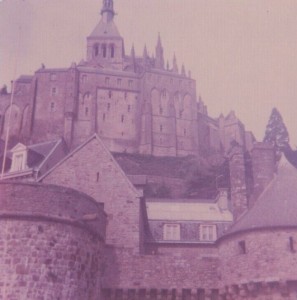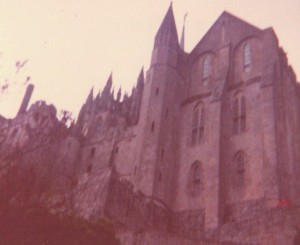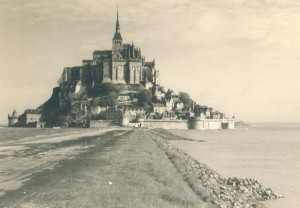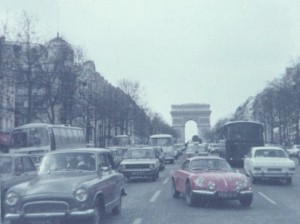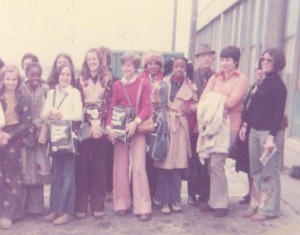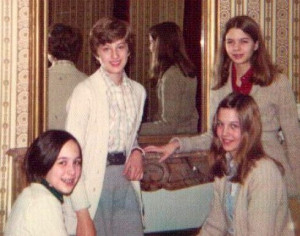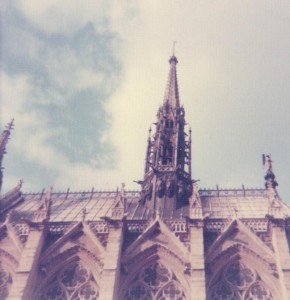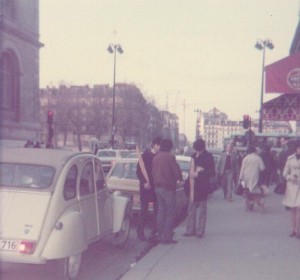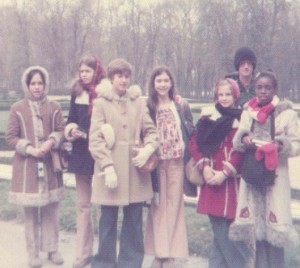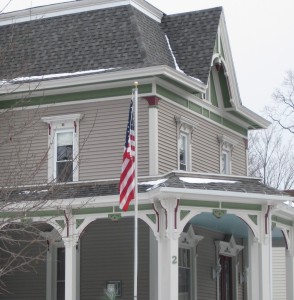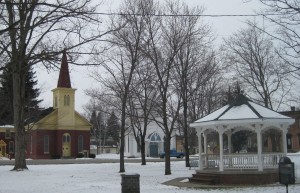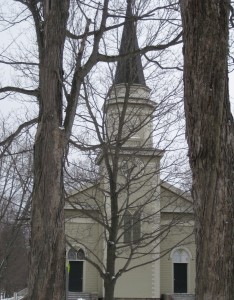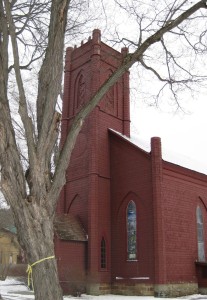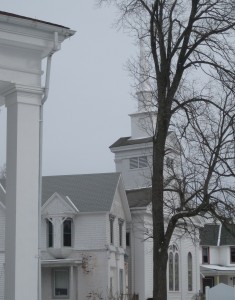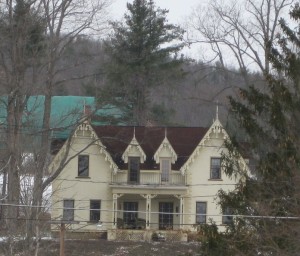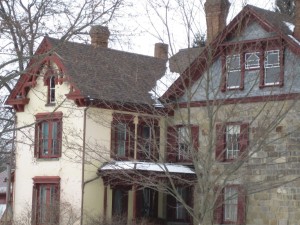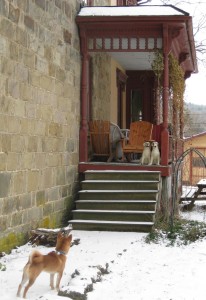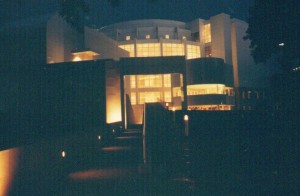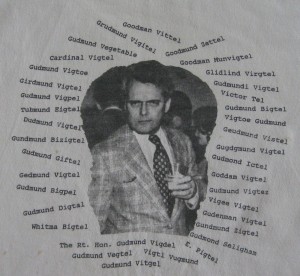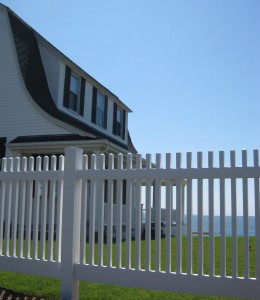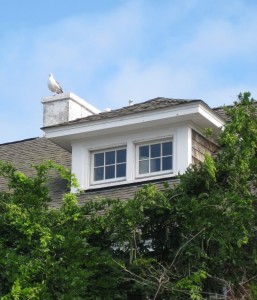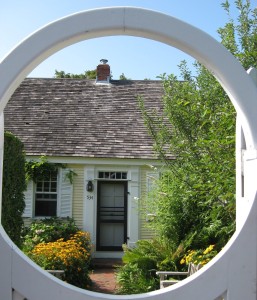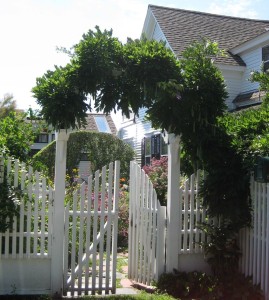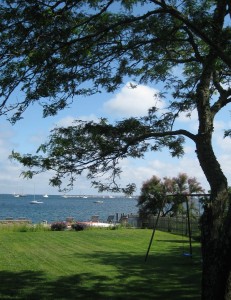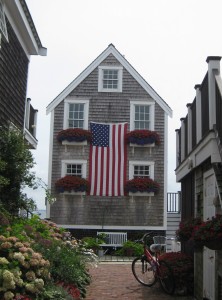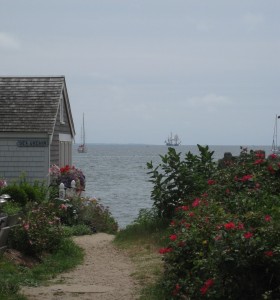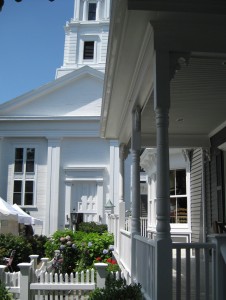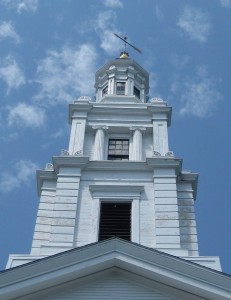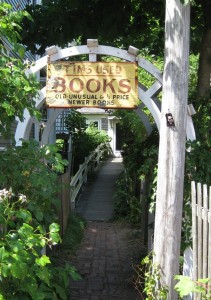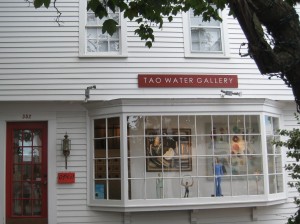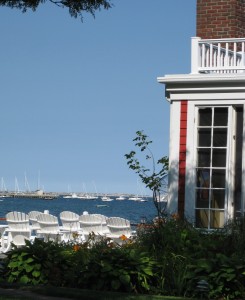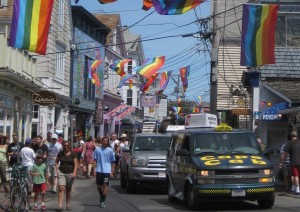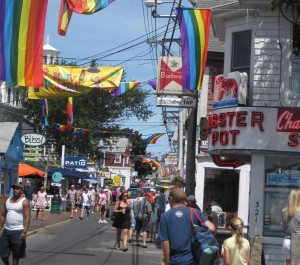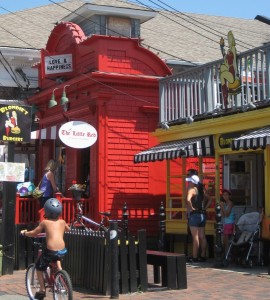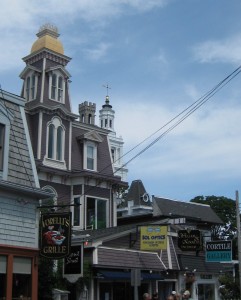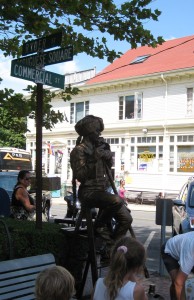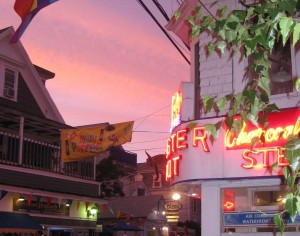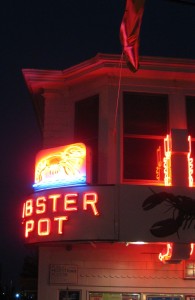For me, one of the great pleasures of travel is returning to a well-loved place. “My” Paris is the Latin Quarter I came to know as a college student. That summer, on weekday mornings, two friends and I would take the RER train from Cité Universitaire to the Luxembourg stop. We’d emerge into the lively bustle of Paris to that unique smell: car exhaust, of a distinctly Parisian type, mingled with the freshness of the new day. We’d walk past the elegant Luxembourg Gardens and the big corner cafés, glimpse the Panthéon at the end of rue Soufflot, and continue down the Boulevard Saint-Michel for a couple of blocks to the Sorbonne, where we had our classes. We’d pass a restaurant where a waiter, setting up his tables, would blow us a kiss and make the beating heart gesture. That kind of chivalric appreciation could brighten even a dismal day. And that summer, dismal days were few.
August 1982: Toward the end of our Paris summer, my friends and I posed for photos around the Latin Quarter, trying our best to look cool. Above, Joanne and I on rue Soufflot, with the Pantheon in the background.
April 2014: My daughter and I try to recreate the photo. The dome of the Panthéon is currently undergoing a massive re-stabilization.
Each time I’ve returned since then to Paris, the Latin Quarter has been home base. With each visit, I discover more to love. Twice now H and I have stayed at the same hotel immediately across from the Panthéon. This area is in the heart of historic Paris, with its roots in the Roman era, yet it’s a bit removed from tourist circuits. While the big tour buses swing past the Panthéon, on the sidewalks you’re likely to pass more actual Parisians than foreign sightseers. Many Americans are apparently unaware that there is a Panthéon in Paris. A typical comment is “I thought that was in Italy.” For the record, it’s a grand neoclassical building inspired by the classical Pantheon in Rome and situated on a hill known as the Montagne Sainte Geneviève. Begun as a Roman Catholic church dedicated to Geneviève, the patron saint of Paris, it was finished during the Revolution as a humanistic temple honoring the great men of France. It may look familiar to Americans because its majestic dome and portico were architectural sources for our U.S. capitol.
Surrounding the Panthéon on its Place, or square, are elegant buildings that function as centers for civic and student life. There is the Mairie, or Town Hall, of the fifth arrondissement, where locals marry, vote, attend concerts, meetings and special events. Opposite the Mairie is the University of Paris Law School. Another neighbor is the Bibliothèque Sainte Geneviève. This library’s arched reading room appears in many Art 101 textbooks because of its early use of structural cast iron. Near the library is the beautiful Church of Saint-Étienne-du-Mont, dating from the thirteenth through sixteenth centuries. Behind the Panthéon sprawls the historic Lycée Henri IV, which incorporates buildings from the medieval Abbey of Sainte Geneviève. Below are some of my favorite views in the old neighborhood I adore.
May 2002: View from our hotel of the Place du Pantheon. From left, the Law School, the Bibliothèque Sainte Geneviève, and the portico of the Panthéon.
April 2014: View from in front of the Panthéon looking down rue Soufflot toward the Luxembourg Gardens and the Eiffel Tower. The colossal bronze statue of a portly nude man was installed in January. A work by the Chinese artist Hong-Biao Shen and entitled Mongolian(Standing Position), it immediately became a popular photo-op destination.
The typical Paris street sign offers explanatory information.
April 2014: the entrance foyer of the Mairie.
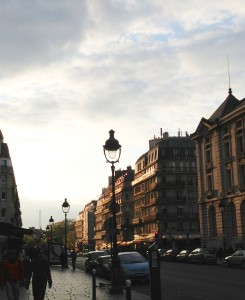 In the light of sunset this past April, the buildings of rue Soufflot glow coppery gold.
In the light of sunset this past April, the buildings of rue Soufflot glow coppery gold.

